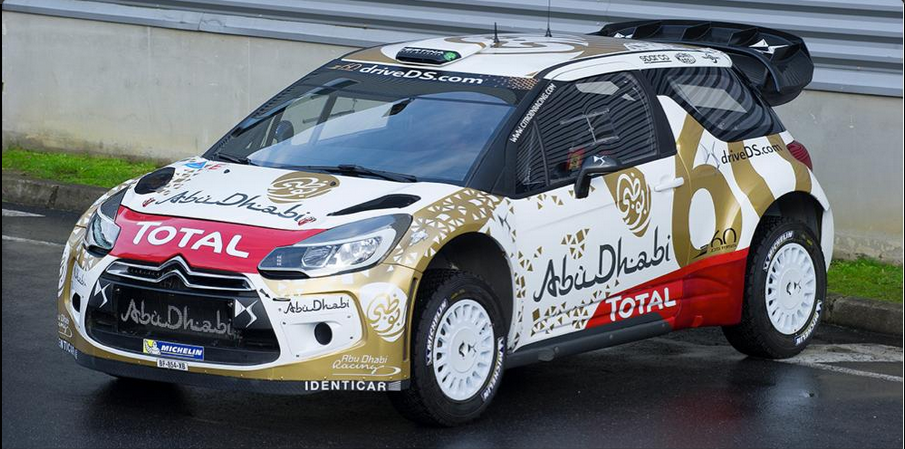After a long period of freezing of developments for WRC cars, the year 2015 allows each manufacturer to get out of the evolutions of its spearhead. If at VW we decided to remake an almost complete car, at Citroën the evolutions are done more by small touches.
There are two reasons for this:
– first of all, Citroën has a budget for its much lower than that of Polo.
– then, the polo shirt was only in its first version whereas the Citroën DS3 is the fruit of a slow evolution and has itself benefited from the experience gained on the C4 WRC and other Xsara.
New in the rally car: engine development and new rear axle
Big engine evolution for the Citroën DS3 WRC 2015.
First of all the biggest evolution seems to relate to the engine which benefits from a new block. If the C-Elysée, which successfully won the WTCC championship, had benefited from the experience stored in the World Rally Championship to develop its 1600 turbo engine, this time it is the WRC which benefits from the work carried out for the WTCC. With its new block, the engine is mainly easier to use. According to Didier Clément, the engineer responsible for the tests, the limited diameter of the inlet flange prevents any real power gain, but there is still a slight gain, on the other hand the torque and especially the curve thereof. are much more favorable. According to Sébastien LOEB, who was able to use it during testing, “it is above all easier to use, fuller, with more torque at low revs.”
Citroën DS3 WRC 2015 rear axle
New cradle and new rear axle geometry for 2015, the aim of which is to optimize traction and ease of driving, “the car must allow instinctive driving, anything that improves the driver’s confidence is good for performance” according to Didier Clément. So it seems the goal was to get a bit closer to the Ford Fiesta in this area where we knew the Citroën lacked traction on terrains with very low grip and behave in a sometimes tricky way for drivers who do not know how to handle it. do not call Sébastien LOEB. Regarding this development precisely, “Seb” said: “The damping remains typical Citroën, which is not to displease me. The balance of the car is a little modified, with a more mobile rear which allows to Wind the turns well. It’s nice, but I have the impression that this – slight – change in behavior is more due to the tires. They have one more groove, there is less wedging and the rubber moves a little more.”
The other evolutions of the Citroën DS3 WRC 2015:
The return of the paddles to the wheel in rallying.
Personally, I find it a bit of a shame that on the one hand we promote sport by prohibiting intermediate times for the crews, and on the other we go the other way by putting the paddles back on the steering wheel, but For Citroën it’s a technology that they master well for having practiced it for a long time and which hopefully should not undermine reliability. Let us recall on this subject that FX Demaison, which did not want a lever on the emergency floor in its 2015 Polo, changed its mind on this subject, proof that this technology is not that easy to make reliable.
Aerodynamics
For the moment the DS3 has adopted aerodynamic work on the rear with a new spoiler comprising longitudinal fins intended to catalyze the air flow. An evolution already seen at Citroën on the Xsara WRC. Didier Clément also admitted that the team was working on an aerodynamic development for the front end during the year.
Here is for the official information concerning this car knowing that for Monte Carlo and Sweden the main novelty will perhaps be behind the wheel with Sébastien LOEB whose return, even if it is limited, pleases everyone. Always so nonchalant and calm, he also declared to have taken pleasure in redoing a pre-Monte Carlo test session, practice sessions whose repetitive aspect had partly motivated his decision to stop the rallies.

